Creative Ideas for Reusing and Recycling Packing Materials
The environmental implications of waste have grown exponentially in today’s rapidly consuming society. Each year, vast amounts of refuse find their way into landfills, significantly contributing to environmental degradation and affecting ecosystems around the world. Amidst this challenge, the adage “Reduce, Reuse, Recycle” has never been more relevant. As consumers and businesses like Idaho movers recognize the pressing need to minimize waste, the twin pillars of reusing and recycling packing materials have emerged as crucial strategies. So, if we all focus on the reusability of packing materials, not only can we alleviate a considerable portion of this waste, but we also take a significant step in reducing our collective carbon footprint.
The Environmental & Economic Benefits of Reusing Packing Materials
Landfills, with their sprawling expanses of discarded items, continue to grow as global consumption intensifies. Packing materials, often destined for a single use before disposal, represent a significant portion of this waste. When we choose to reuse these materials, their presence in dumps diminishes, promoting more sustainable waste management practices.
Every item repurposed reduces the demand for production, a process that consumes vast amounts of energy and raw materials. Through the act of reusing packing materials, we conserve these essential resources and mitigate energy typically derived from fossil fuels, which subsequently lowers greenhouse gas emissions.
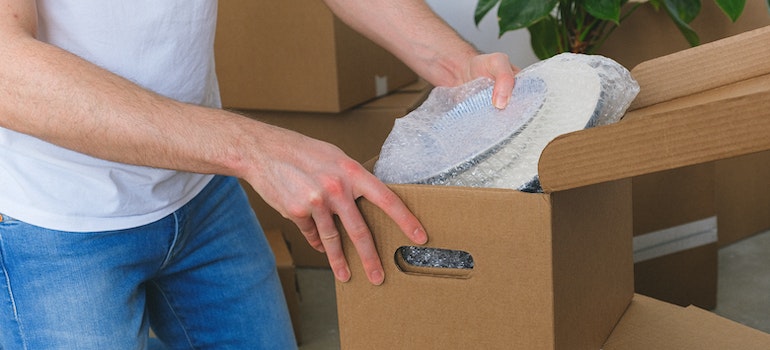
The merits of reusing packing supplies Boise provides extend beyond just environmental benefits. Economically, businesses can capture substantial value. Acquiring new packing materials generally incurs higher expenses compared to utilizing what’s already available. Tapping into the potential of reuse, businesses can achieve notable savings. Likewise, individuals benefit by creatively repurposing packing materials for personal or home projects, avoiding the cost of purchasing alternatives.
Common Packing Materials and Their Potential for Reuse
Every time we open a package, we’re presented with an array of packing materials designed to protect our purchases. While their primary purpose is to ensure the safety of items during transit, these materials often come with untapped potential for reuse:
- Cardboard boxes
- Bubble wrap
- Styrofoam peanuts
- Plastic air pillows
- Packing paper
As you may guess already, there are unique possibilities for reusing and recycling packing materials. Hence, we’ll uncover creative ways to give these materials a second, third, or even fourth life, transforming them from mere packing supplies into valuable assets for various applications.
The Backbone of Shipping
Cardboard boxes are ubiquitous, often piling up after a few online shopping sprees. But the potential of moving boxes Boise offers goes beyond their initial use. These boxes can be flattened and stored for future shipping needs. Additionally, with a bit of creativity, they can be turned into DIY storage solutions, children’s playhouses, or even garden mulch. Their sturdy nature makes them suitable for a plethora of projects, from art to practical home solutions.
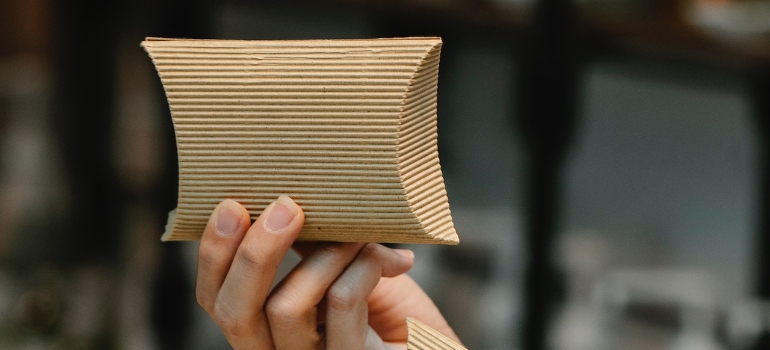
Not Just for Popping!
While many enjoy the simple pleasure of popping bubble wrap, this packing material has numerous reuse applications. Consider using it as a liner to insulate windows during colder months or as a cushioned mat for delicate items. Craft enthusiasts can also incorporate bubble wrap into art projects, creating textured patterns on canvases or paper.
Lightweight Kind of Peanuts
Styrofoam peanuts, despite being lightweight, offer significant protective qualities. Beyond their primary packing function, they can be used as filler for homemade bean bags or draft stoppers. Gardeners might also consider using them to improve soil aeration by mixing them into potting soil, especially for plants that require well-draining substrates.
Versatile Plastic Air Pillows
Often used in shipping for their space-saving qualities, plastic air pillows can be reinflated and reused for future packing needs. Alternatively, they make for excellent floatation devices for pool parties or makeshift camping mattresses. Their durable nature means they can also serve as protective layers for fragile items the next time you book moving services in Boise ID, or rent a storage unit.
From Wrapping to Crafting
Packing paper, with its plain and flexible nature, lends itself well to various craft projects. It can be used to create homemade wrapping paper, book covers, or even origami creations. Additionally, packing paper can serve practical purposes like lining drawers or shelves or even aiding in window cleaning for a streak-free shine.
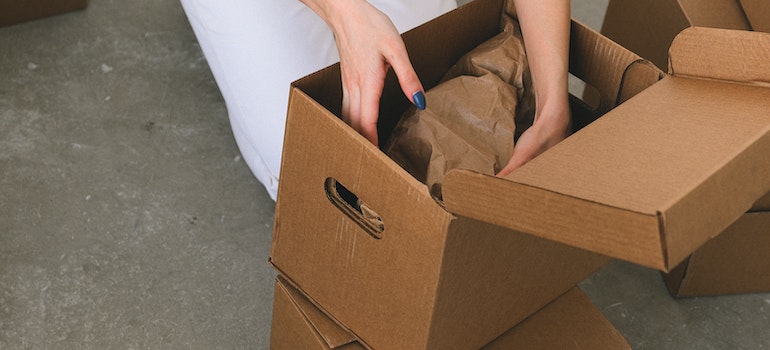
Clever Ways for Reusing and Recycling Packing Materials
The vast potential of packing materials often goes unnoticed. Yet, with a splash of creativity and a touch of resourcefulness, these materials can find a second life in diverse applications ranging from home solutions to artistic endeavors. Let’s explore some ingenious and practical ways to repurpose these materials.
Cardboard Boxes
- DIY Storage Solutions: Drawers, Shelves, and Organizers – Don’t discard those cardboard boxes just yet. With some careful cutting and folding, transform them into effective storage containers for portable storage Boise offers. Whether it’s a drawer organizer for office supplies or shelves for a child’s room, cardboard offers flexibility in design and purpose.
- Children’s Play: Crafting Playhouses, Costumes, and More – Cardboard can easily become a child’s canvas. Craft imaginative playhouses, intricate costumes, or even simple puzzles. Not only does this promote creativity in youngsters, but it also provides an eco-friendly playtime solution.
- Gardening: Seed Starters, Composting, and Weed Barriers – Garden enthusiasts can turn cardboard into seed starters, creating biodegradable pots for young plants. Additionally, shredded cardboard serves as a valuable composting material, while larger sheets can function as weed barriers in garden beds.
Bubble Wrap
- Insulation: Window Insulator During Winter Months – Bubble wrap proves an effective window insulator. Affixing it to windows can trap heat, thereby reducing heating costs during cold spells.
- Fun Crafts: Bubble Wrap Art and Textures – Unleash artistic potential with bubble wrap while reusing and recycling packing materials. Press it onto paint and then onto paper to create mesmerizing patterns. It’s an engaging activity suitable for both kids and adults.
- Protective Layers: Cushioning for Gardening and Kneelers – Use bubble wrap as cushioning for gardening kneelers or for protecting delicate plants from rough surfaces.
Styrofoam Peanuts
- Lightweight Fillers: Potted Plant Drainage – Styrofoam peanuts can enhance drainage in potted plants. Placing them at the base of pots ensures excess water flows freely, preventing root rot.
- Handcrafts: Making Lightweight Sculptures and DIY Projects – Mold Styrofoam peanuts into lightweight sculptures or incorporate them into DIY projects. They are easily shaped and, with the right adhesive, can bond together to form intricate designs.
- Insulation: Filling Gaps in Small Spaces – Tackle small gaps and spaces needing insulation by filling them with Styrofoam peanuts. This method is especially handy for insulating crevices in workshops or garages.
Plastic Air Pillows
- Pool Floats: DIY Waterproof Cushions – Deflated or partially inflated air pillows make excellent waterproof cushions. Seam them together for pool loungers or floating drink holders.
- Draft Stoppers: Filling Gaps Under Doors or Windows – Air pillows can prevent cold drafts by blocking gaps under doors or windows. Placing them in makeshift fabric covers can also enhance aesthetic appeal.
- Protective Pouches: Custom-made Cushions for Delicate Items – Create protective pouches for fragile items by utilizing air pillows. These custom cushions offer added protection during transport or safekeeping in storage units Boise providers offer.
Packing Paper
- Gift Wrapping: Personalized and Crafty Gift Wraps – Elevate gift-giving by using packing paper as unique gift wraps. Stamps, paint, or even hand-drawn designs can turn ordinary paper into personalized wrapping.
- DIY Book Covers – Durable packing paper is excellent for crafting DIY book covers. Protect textbooks or personalize notebooks with adaptable and customizable paper covers.
- Composting: Organic and Biodegradable Addition to Compost – Organic packing paper can be shredded and added to compost piles. As it breaks down, it contributes valuable carbon to the composting process, aiding in the creation of rich, fertile soil.
With these suggestions, packing materials transform from single-use items into versatile, reusable assets, offering both environmental benefits and innovative solutions for everyday challenges.
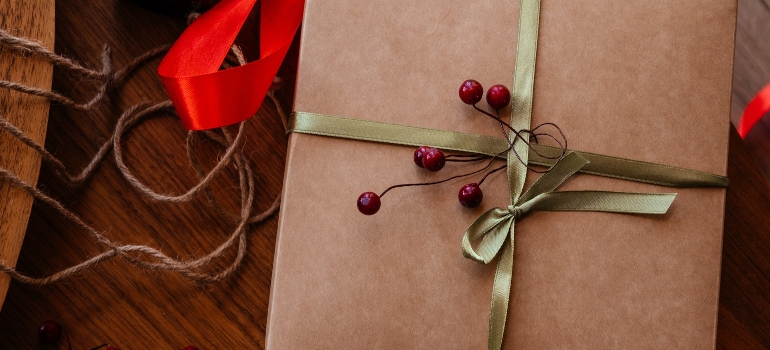
Recycling vs. Upcycling: Know the Difference
In the journey towards environmental sustainability, two terms often come to the forefront: recycling and upcycling. Recycling typically refers to the process of converting waste materials into new products, reducing the need for raw resources. It involves breaking down items, often to their base materials, to create something entirely new.
On the other hand, upcycling is the creative reuse of waste items without degrading the material’s quality and composition. It transforms an item into something of equal or greater value. Thus, both methods have their unique advantages when reusing and recycling packing materials.
While recycling helps decrease the volume of waste going to landfills and conserves natural resources, upcycling adds a creative touch, giving old items new life. Deciding between the two often depends on the materials at hand and the specific circumstances.
Establishing a System for Collecting and Storing Packing Materials
Effective reuse of packing materials starts with organized collection and storage. A dedicated space, whether a simple shelf in a garage or a corner in an office, allows for easy access and categorization. Arranging materials by type simplifies the process when embarking on a DIY project or packing a shipment for local movers Boise residents use. Cardboard with cardboard, bubble wrap with its kin, and so on.
Additionally, maintaining the cleanliness of these materials ensures their longevity and usability. Dust-free, dry storage prevents potential degradation, ensuring materials are always ready for their next purpose.
Encouraging Others to Reuse and Recycle
The adage that there’s strength in numbers holds true when promoting eco-friendly practices. Hosting events where individuals swap packing materials can foster a sense of community while reducing waste. Local businesses can also play a role. Establishing collection points at neighborhood shops or cafes encourages the community to drop off materials they no longer need, making them available for others.
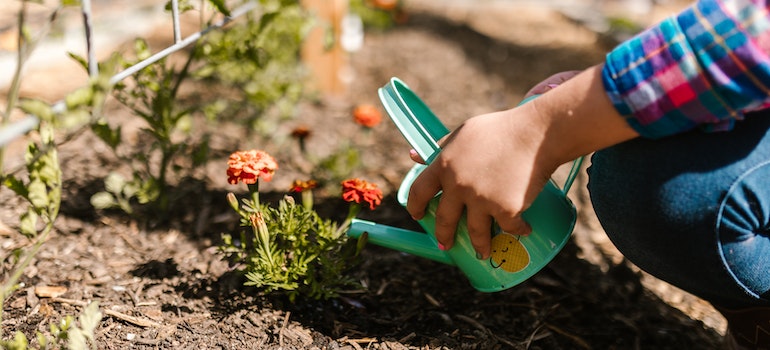
Beyond the tangible, education remains a powerful tool. Hosting workshops or community classes that shine a light on the art of reusing and recycling can inspire more individuals to embrace sustainable practices.
Challenges and Solutions in Reusing Packing Materials
While the goal is noble, the path to reusing packing materials isn’t without its challenges. Some materials degrade with time or are susceptible to wear and tear, limiting their usability. However, with every challenge arises an opportunity for innovation. For instance, while some plastics may become brittle over time, they can be melted and reshaped into durable tools or decor.
On the other hand, organic materials like packing paper, which might become worn or torn, can serve a new purpose in composting or crafting. The key is to view challenges as stepping stones, leading to inventive solutions that continue the lifecycle of the material.
Eco-Innovation: The Future of Sustainable Packing
As we wrap up our exploration of reusing and recycling packing materials, it becomes evident that the path toward sustainability can be both creative and practical. Each method, whether it’s upcycling an old cardboard box into a DIY shelf or recycling bubble wrap to produce new protective layers, showcases our ability to reimagine waste. Beyond individual actions, the communal efforts of hosting swap events and educating others amplify the impact.
So, if we recognize challenges as opportunities for innovation, we can ensure that sustainable packaging practices become the norm rather than the exception. As consumers and producers, our collective commitment to these practices not only reduces our carbon footprint but also paves the way for a more eco-conscious future.

